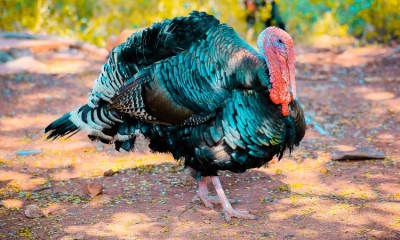
The gizzard, which is part of the Turkey’s stomach, contains tiny stones swallowed by the bird. Also known as gastroliths, these stones help them grind food since they do not have teeth.
The first stomach is called the glandular stomach, where food is softened and broken down by gastric juices. The food then enters the turkey’s second stomach, the gizzard, where it is ground against the gastroliths.
Turkeys (and chickens) swallow pebbles or small rocks to aid in digestion. The rocks are stored in an organ called the gizzard where mechanical breakdown of food occurs since turkeys do not have teeth.
Turkeys might not have teeth, but they do have two stomachs! The glandular stomach is where food is softened and broken down by gastric juices. The food then enters the second stomach, the gizzard, which is muscular and further dissolves the food by grinding it against the stones.
Turkeys have excellent vision and are able to see in full color.
Because their eyes are on the sides of their heads, they have periscopic vision, allowing them to see objects that are not in their direct line of sight. A turkey’s field of vision is 270 degrees, compared to only 180 degrees in humans!
Although they don’t have external ears (they have ear openings, covered by a small flap of fuzz), they have great hearing, love listening to music, and will cluck along with the songs.
Picture Credit : Google




